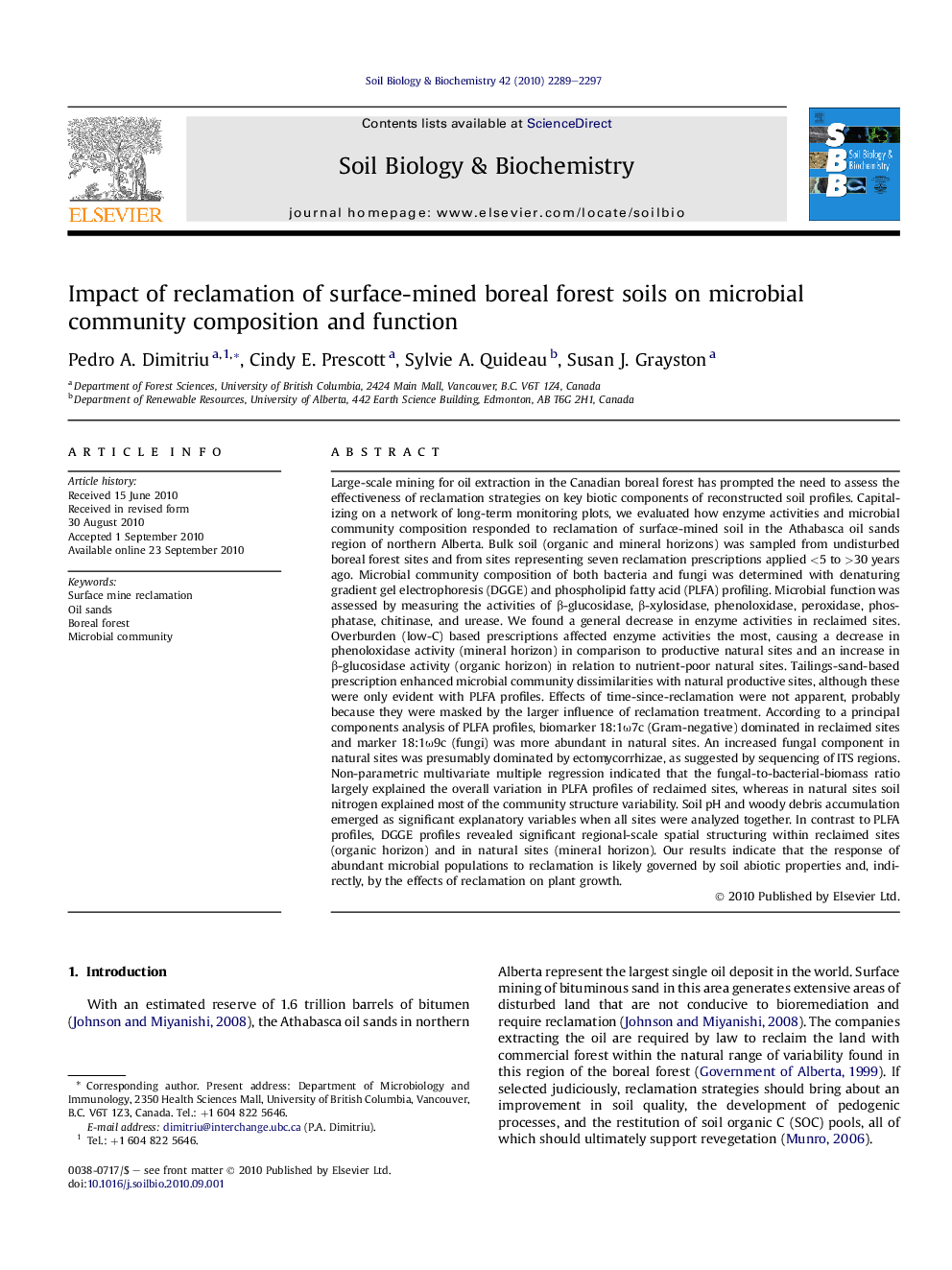| کد مقاله | کد نشریه | سال انتشار | مقاله انگلیسی | نسخه تمام متن |
|---|---|---|---|---|
| 2025383 | 1069993 | 2010 | 9 صفحه PDF | دانلود رایگان |

Large-scale mining for oil extraction in the Canadian boreal forest has prompted the need to assess the effectiveness of reclamation strategies on key biotic components of reconstructed soil profiles. Capitalizing on a network of long-term monitoring plots, we evaluated how enzyme activities and microbial community composition responded to reclamation of surface-mined soil in the Athabasca oil sands region of northern Alberta. Bulk soil (organic and mineral horizons) was sampled from undisturbed boreal forest sites and from sites representing seven reclamation prescriptions applied <5 to >30 years ago. Microbial community composition of both bacteria and fungi was determined with denaturing gradient gel electrophoresis (DGGE) and phospholipid fatty acid (PLFA) profiling. Microbial function was assessed by measuring the activities of β-glucosidase, β-xylosidase, phenoloxidase, peroxidase, phosphatase, chitinase, and urease. We found a general decrease in enzyme activities in reclaimed sites. Overburden (low-C) based prescriptions affected enzyme activities the most, causing a decrease in phenoloxidase activity (mineral horizon) in comparison to productive natural sites and an increase in β-glucosidase activity (organic horizon) in relation to nutrient-poor natural sites. Tailings-sand-based prescription enhanced microbial community dissimilarities with natural productive sites, although these were only evident with PLFA profiles. Effects of time-since-reclamation were not apparent, probably because they were masked by the larger influence of reclamation treatment. According to a principal components analysis of PLFA profiles, biomarker 18:1ω7c (Gram-negative) dominated in reclaimed sites and marker 18:1ω9c (fungi) was more abundant in natural sites. An increased fungal component in natural sites was presumably dominated by ectomycorrhizae, as suggested by sequencing of ITS regions. Non-parametric multivariate multiple regression indicated that the fungal-to-bacterial-biomass ratio largely explained the overall variation in PLFA profiles of reclaimed sites, whereas in natural sites soil nitrogen explained most of the community structure variability. Soil pH and woody debris accumulation emerged as significant explanatory variables when all sites were analyzed together. In contrast to PLFA profiles, DGGE profiles revealed significant regional-scale spatial structuring within reclaimed sites (organic horizon) and in natural sites (mineral horizon). Our results indicate that the response of abundant microbial populations to reclamation is likely governed by soil abiotic properties and, indirectly, by the effects of reclamation on plant growth.
Research highlights
► Land reclamation in the boreal forest promotes the development of a unique microbial community.
► Tailings-sand-containing reclamation materials prevent the convergence of microbial composition and function dwelling in undisturbed and in reclaimed sites.
► Reclamation-mediated effects on microbial properties are mainly attributable to changes in abiotic factors such as soil pH.
Journal: Soil Biology and Biochemistry - Volume 42, Issue 12, December 2010, Pages 2289–2297